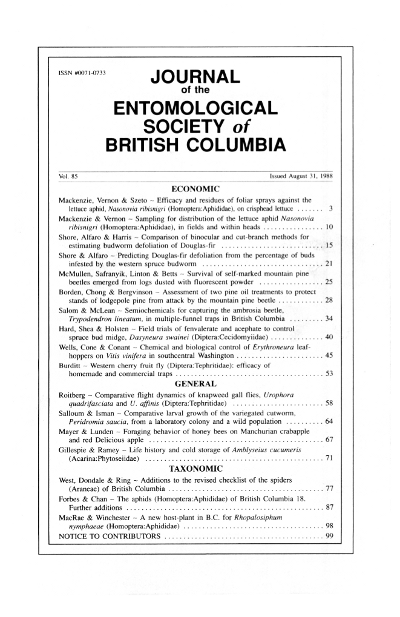Chemical and Biological Control of <i>Erythroneura</i> Leafhoppers on <i>Vitis vinifera</i> in Southcentral Washington
Abstract
Fenpropathrin (56 g [AI]/ha) and dimethoate ( 1681 g [AI]/ha) controlled the western grape leafhopper, Erythroneura elegantula Osborn. Arthropod predators were collected on wine grapes, Vitis Vinifera (L.). Most were of uncertain importance in the regulation of Erythroneura spp. populations. The greatest source of leathopper egg mortality is parasitization by the mymarid wasp, Anagrus epos Girault. Vineyards grown in isolated areas ( 10-20 Km from other irrigated areas) are subject to leafhopper injury in the absence of the parasitoid which requires a continuous supply of leafhopper eggs. The concept of infesting French prune, Prunus domestica L. , with non-pestiferous Erythroneura prunicola as a winter refugium for A. epos is advanced as an approach to biological control of Erythroneura spp. in isolated areas.Downloads
Issue
Section
License
Authors who publish with the Journal of the Entomological Society of British Columbia agree to the following terms:
-Authors retain copyright and grant the journal right of first publication with the work simultaneously licensed under a Creative Commons Attribution License that allows others to share the work with an acknowledgement of the work's authorship and initial publication in this journal.
-Authors are able to enter into separate, additional contractual arrangements for the non-exclusive distribution of the journal's published version of the work (e.g., post it to an institutional repository or publish it in a book), with an acknowledgement of its initial publication in this journal.
-Authors are permitted and encouraged to post their work online (e.g., in institutional repositories or on their website) prior to and during the submission process, as it can lead to productive exchanges, as well as earlier and greater citation of published work (See The Effect of Open Access).


